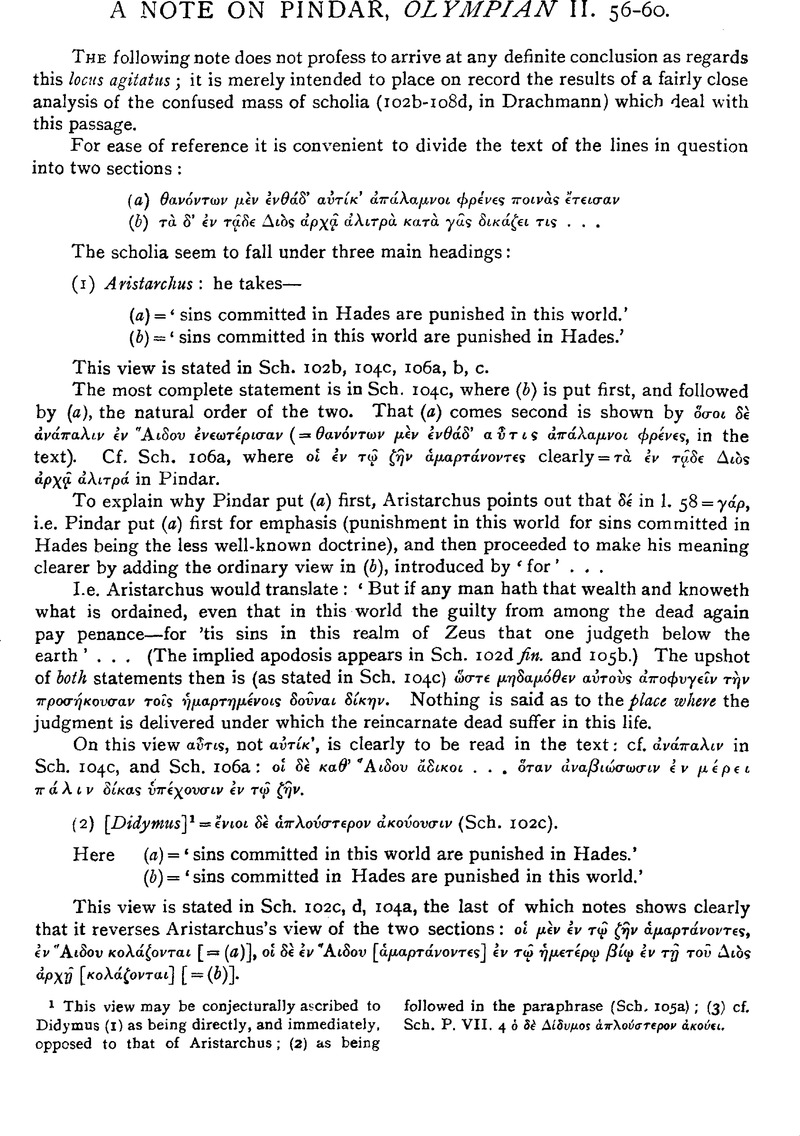No CrossRef data available.
Article contents
A Note on Pindar Olympian II. 56–60
Published online by Cambridge University Press: 11 February 2009
Abstract

- Type
- Other
- Information
- Copyright
- Copyright © The Classical Association 1930
References
page 191 note 1 This view may be conjecturally ascribed to Didymus (1)as being directly, and immediately, opposed to that of Aristarchus; (2) as being followed in the paraphrase (Sch. 105a); (3) cf. Sch. P. VII. 4 δ Δδυμος πλοστερν κοει.
page 192 note 1 Cf. Lehrs, Die Pindarscholim, p. 16 sqq.
page 192 note 2 This is not, of course, Chrysippus of Soli, but a grammarian, a pupil of Aristarchus, who seems to come, in point of time, between Aristarchus and Didymus; cf. Körte, A., Rhein. Mus. 55 (1900), p. 131Google Scholar.
page 192 note 3 For this to us extraordinary supplement, apparently quite wanton and groundless, cf. Sch.O. II. 117c, where παρ τιμς θεν is rendered by παρ τοτις διατρβουσι τοῖς τιμωνοις ὑ π θεν, and Sch. P. IV. 113a, where ὲν is similarly inserted.


